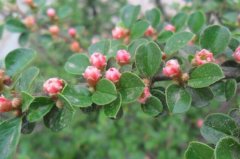How should bonsai small banyan trees be raised
Little Banyan TreeBonsaiIt is also very popular, so there is a lot of experience to be found, some flower friends askBonsaiHow should a small banyan tree be raised? Theory is not as good as experience. Let’s take a look at what the flower friends who have raised say, and we can see the daily maintenance method from the problem.
Let’s talk about the problem of deciduous yellow leaves in the bonsai of small banyan trees. If the phenomenon of deciduous yellow leaves appears in the original pots of old trees, it is nothing more than sunshine, ventilation, improper watering, improper fertilization, and failure to replace soil for many years.In summer, you need to shade and maintain, and the other three seasons are all in the sun, mainly those that have been planted in a semi-shaded place. It is absolutely impossible to plant in the sun suddenly. It takes a little bit of adaptation to the sun.Those leaves have dark spots and bugs. The main reason is poor ventilation. The indoor environment is inherently closed, the air circulation is poor, and the quality is poor. Some people also like to spray water on the leaves every day, saying that the northern environment is dry, but in fact they don’t use it at all.Spray water every day, and wash the leaves every few days.
ventilation
Everyone knows that a closed environment is easy to breed bacteria, so ventilation is very important. Open windows for ventilation every morning and night, avoid ventilation at noon, because the wind at noon is a bit dry and hot, and the wind is cooler in the morning and evening.
Watering
I have heard that watering should see dry and wet, why see dry and wet? Dry and non-dry leaves are a bit wilted before watering. Do not water in the pot when wet. Watering time should be based on the material of your basin.Certainly, some pot soils have better water retention. Although the surface seems to be dry, there is no shortage of water inside. The ginseng ficus itself is a fleshy root that will store water. It will not appear if it is slightly dry. To be honest, most of the flowers are not dry.Yes, it is basically watering too much, the roots are too moist for a long time, the roots cannot breathe air, and finally rot and die. My personal watering experience is for reference only: the surface of the pot soil is dry about one centimeter and it is time to water, according to the flower potMy long-term watering experience finds a container that can just be watered, and finds that it is watered every time it is dry, that is, it will not be too much. The water should be reserved in advance. It is not good to use tap water directly.No watering at noon, no watering on cloudy days.
Small banyan tree bonsai fertilization
Improper fertilization is not to burn the roots or burn the leaves. The concentration is not easy to master. Bonsai is originally for indoor foliage and root viewing. Why do you let it grow so big? When you grow up, you will say that it is too bigIf you want to see the big ones, you can plant them in the field, and they can definitely grow into big trees. Small banyan trees don’t like fertilizer. As long as the potting soil is in place, try not to fertilize them at ordinary times.The nutrients contained in the leaf soil are sufficient.
Change basin
It is best to bring one-third of the original soil when changing the pot. If the roots are not cut, it is best not to cut them. Keep them as long as they are not rotten roots. The small banyan tree bonsai belongs to the fleshy roots. The roots need to be pruned.For planting, the pot soil is best to be sterilized, otherwise it is easy to be infected and cause the roots to rot. Do not water before changing the pot. The time for changing the pot is preferably before the spring budding. After the pot is changed, it should be watered once, and kept in a cool and ventilated place.It takes about half a month, and then slowly accept the light for normal maintenance. If it is a newly purchased small banyan tree bonsai, it is best to bring the original soil to the pot.
- Related knowledge
- Can you put the bonsai of the small banyan tree at home?
- Banyan potted aerial roots
- Pruning method of banyan tree
- What to do if the banyan tree loses its leaves
- How to raise banyan tree bonsai
- Banyan cultivation methods and precautions
- Foliage of banyan tree
- How to control banyan bonsai leaves
- Discussion on how to promote the rooting of banyan tree bonsai
- New technology of banyan seedling breeding
- How to raise elm bonsai
- Flower and fruit management technology of potted pomegranate
- Maintenance method of five-needle pine bonsai
- The production and maintenance of five-color plum bonsai
- How to make a climbing bonsai in Suzhou
- Apple bonsai potted technology
- Conservation method of black pine bonsai
- Water and dry cypress bonsai
- Editor's recommendation
- Australia fir breeding method
- Conservation method of winter plum bonsai
- How to make wolfberry bonsai picture
- How to make winter jasmine bonsai
- The maintenance method of yew bonsai
- Cultivation and maintenance of ebony black bone fragrant
- How to make vine bonsai
- Pruning method for osmanthus bonsai modeling
- How to make Pyracantha bonsai
- Conservation method of bonsai welcome pine






